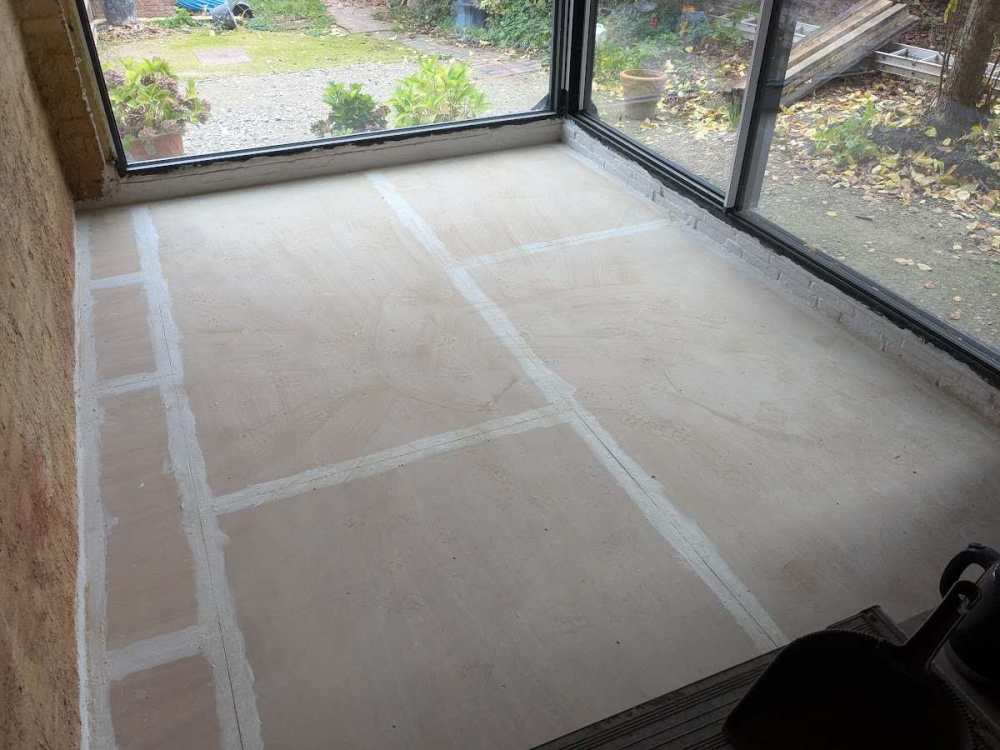
Annker
Members-
Posts
207 -
Joined
-
Last visited
-
Days Won
1
Annker last won the day on April 19 2024
Annker had the most liked content!
Recent Profile Visitors
1772 profile views
Annker's Achievements

Regular Member (4/5)
45
Reputation
-
Recommended method for connecting 40/50mm wastes to a soil stack
Annker replied to Annker's topic in Waste & Sewerage
@ProDave Hopefully the manufacturers have considered that but I guess only practical "testing" will confirm. My initial plan was to run the horizontal soil from the frame at/above floor level; as opposed to below floor level within the joist void. Therefore avoiding any rearrangement of the joist solid bridging. However, from the image of the frame I noticed that the short vertical outlet attached to the frame appears longer than those on say Geberit frames. Rather than assuming that vertical outlet could be cut back to permit running the horizontal pipe above floor level I decided to call the Vitra tech dept. They didn't provide a definitive response but suggested that frame may benefit from the longer drop provided from that longer vertical outlet. Its frustratingly all too common to hear manufactures giving ambiguous advice regarding how their products perform or should be installed. -
I'm looking for some advice regarding connections soil stack. I have an ensuite and bathroom located back to back and the plan is to connect all the wastes (2xWCs, 2x showers & 2x WHBs) into a single soil stack which is located on the other side of a wall these two wet rooms share. The WCs will share a back to back concealed cistern ,the waste from this will push into 90 degree bend then a 1 metre horizontal run through the wall and then connect to the soil stack with a 90 branch. My question is if there is a preferred method of connecting the shower and WHB wastes to the soil stack. A neat option could be to combine the 2x shower waste connections to the stack along with the WC connection with this triple socket 90 branch. Or is it better to use strap bosses or even these McAlpine bosses and make individual connection to the stack? Also are there rules concerning shower/WHB wastes connect to a soil stack above/below WC connection to the stack?
-
Thanks John very helpful. Plan is not to have a hot return, therefore in very simple terms for now this would look schematically like: 22mm or 15mm pipe from the cylinder to a 6 port manifold located in the cellar adjacent to the cylinder, or possibly in the utility room above Then from that 6 port manifold 6x single 15mm pipes to: Bathroom Ensuite 1 Ensuite 2 WC Kitchen Utility Then within each bathroom/ensuite a 2 or 3 port manifold feeding shower/basin/bath as necessary.
-
The distribution valve sounds like a clean solution. Being able to 2nd fix each bathroom as and when, and then simply turn a respective isolation valve to bring them online without affecting the heating system would be ideal.
-
I had imagine that "in theory" a contractor should quote the same baseline figure whether going the MCS route or not. Then add on additional administrative costs (unsure if the installation differs and raise some more additional cost) which add up to being less than the value of the grant, therefore making MCS financial incentivised. Although perhaps in reality contractors are miking the MCS a little. From the single quote I have had returned, I thought it read that the contractor was deducting the £7500 grant from his cost/my bill and would apply and receive that payment directly himself. Although I may have misunderstood how that works, and in fact I have to pay the contractor that £7500 and then I have to wait for reimbursement. Regardless a good point to be nailed down prior to work commencing. WRT a piece meal setup, it does sound a little bit messy and in my experience that's when systems start to have problems. If the heating was all fully installed, but the domestic HW (bathrooms) were piecemeal would that still require a buffer installed until the heating and all the HW were fully finished?
-
Yes Sharpener that makes sense, perhaps If the rad installation was left within the ASHP package it may help a cleaner commissioning process. I have read about the umbrella route but where I am happy to (at least consider) taking on the 2nd fix, I will certainly leave the heat systems proper to a MCS reg'd contractor.
-
Yes Nick, looking at MCS. As far as I can make out it seems well worth going that route.
-
I have back to brick Victorian semi-d reno on the go. Plan for heating is ASHP heating 10x rads and UFH in 2x rooms. This may be a silly idea but is it feasible to have a Heating & Plumbing contractor install the ASAP, cylinder and all distribution pipework (heating and hot water), leaving me (a carpenter) to install the radiator and bathroom ware? Am I entirely underestimating the complexity in imaging that a contractor could supply and install an operational system to which I can then attach the 2nd fix items? It seems there are a number of contractors who specialise in heat pump installs so perhaps they would be onboard. I'm also interest in this sort of arrangement because it may allow me to finish out the three bathrooms in the project as and when required. I suppose there would be a lot of draining down/refilling so you'd would have to agree a number of visits from the contractor, and confirm who is responsibility for what leaks, etc. It may be a daft idea so I thought I'd ask for opinions here before going to the market!
-
Does anyone know if Gypframe MF5 (Top hat ceiling section) can be used as the furring channel with GenieClips? I have a number of lengths of MF5 on site that would be great to use up rather than buying the expansive branded channel for the Genie clips as promoted by the suppliers.
-
I currently have near a identical arrangement to your sketch with added issue of the sliding doors installed. In my case it's my own fault as I was involved with the design. I thought my sliding door supplier/installers were on the ball, and otherwise I am very happy with them, but I am wondering how they didn't flag my oversight of insulation when these detail are bread and butter to them. Two options I'm considered are either: Insulate the SHS externally and suffer that insulated SHS pressing will step past the face of the frame. or insulate internally and do not insulation externally, this will allow the external SHS cover pressing finish flush with the face of the frame but greater risk of a cold bridge. My frames are alu and not thermally broken so perhaps it's more of an annoyance that a material issue.
-
I doing a full heating install into a victorian reno and at the minute the plan is to install UHF in two rooms. Given the small areas that need covering, and limited onsite access, I am searching for screed options I can mix up myself onsite. One room has a block & beam subfloor, therefore traditional sand and cement laid at ~65mm thick is the go to option. The other room has a suspended timber subfloor so I am looking to save Dead load in this particular room, this can be achieved by using a liquid screed at 40mm thick. The suspended timber subfloor is newly installed. I have ran the numbers through ChatGPT and it can comfortably support the weight of a 40mm thick liquid screed laid on 100mm PIR. Mapei ultraplan reno screed looks like a potential option, it can be laid to 40mm an UFH compatible although I'm unsure if it is suitable floating on PIR on a suspended timber sub floor. I don't have a specific concern, so just wondering if anyone has used it in a similar situation? EDIT: I called Mapei Tech and they advised that ultraplan reno is moreso a self leveling product and instead recommend using Topcem, however thhe minimum thickness it can be laid at is 55mm, so a weight increase that I will have to check
-
Fine tuning my IWI Solid wall (Warm Batten) design
Annker replied to Annker's topic in Heat Insulation
That is a good point to make, and yes I am broadly aware of the relationship between RH and temp. Its worth mentioning that atm my house is very much a bare bones building and I believe at a lot of times during the day it is colder inside the house than it is outside it. My observation was moreso a generally one ,that on humid days (not necessarily rainy days) the patches appear darker.


.jpg.c21f3ac78c9b7efd90cbdcb312744dc5.thumb.jpg.7adcad4c0e384f5ecd7d56b0618df6e5.jpg)
